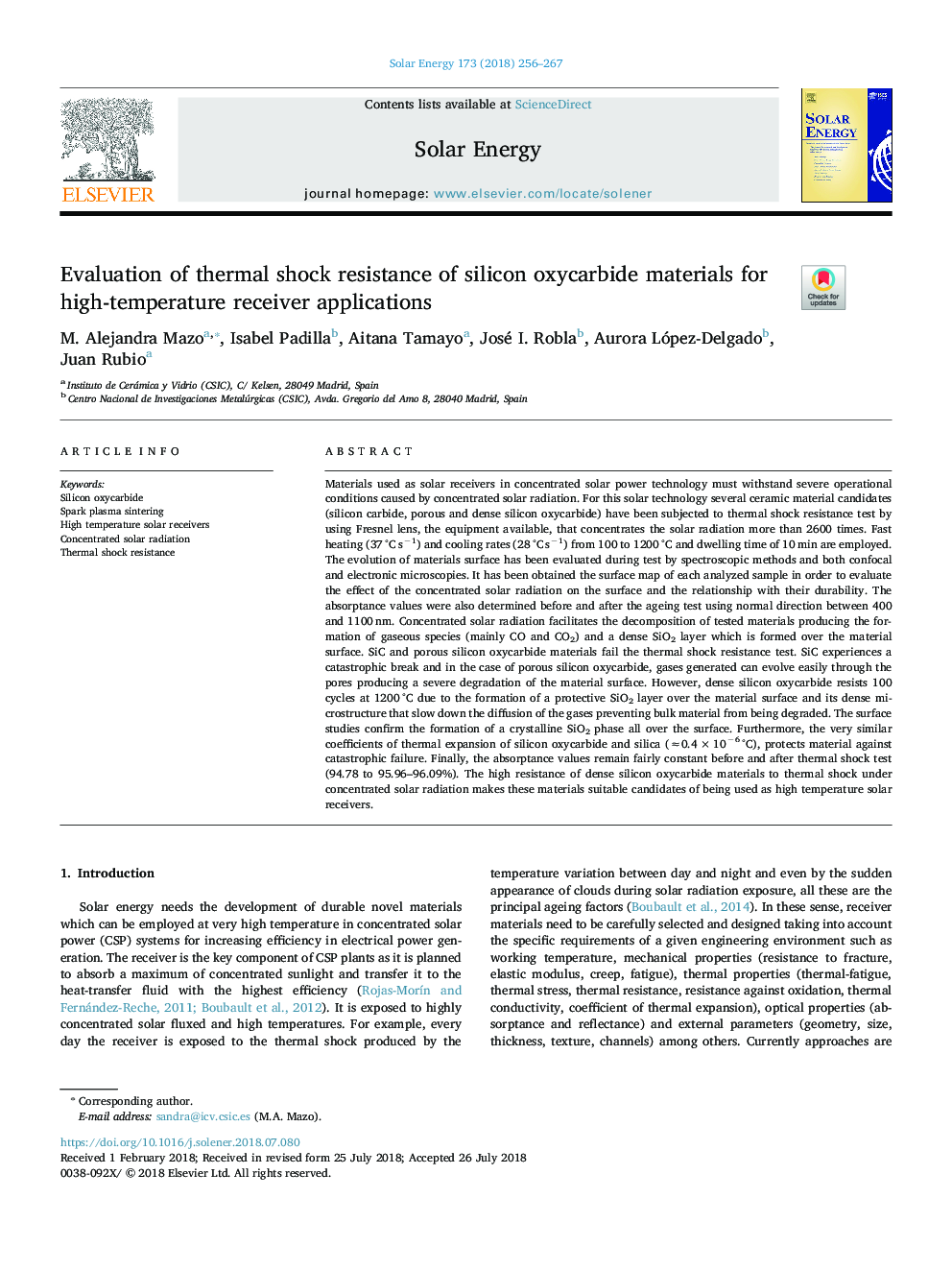| کد مقاله | کد نشریه | سال انتشار | مقاله انگلیسی | نسخه تمام متن |
|---|---|---|---|---|
| 7934917 | 1513046 | 2018 | 12 صفحه PDF | دانلود رایگان |
عنوان انگلیسی مقاله ISI
Evaluation of thermal shock resistance of silicon oxycarbide materials for high-temperature receiver applications
ترجمه فارسی عنوان
بررسی مقاومت شوک حرارتی مواد اکسید کربید سیلیکون برای کاربردهای گیرنده دما
دانلود مقاله + سفارش ترجمه
دانلود مقاله ISI انگلیسی
رایگان برای ایرانیان
کلمات کلیدی
سیلیکون اکسی کرباید، پخت سیلر جرقه، گیرنده های خورشیدی با درجه حرارت بالا، تابش خورشید متمرکز، مقاومت شوک حرارتی،
موضوعات مرتبط
مهندسی و علوم پایه
مهندسی انرژی
انرژی های تجدید پذیر، توسعه پایدار و محیط زیست
چکیده انگلیسی
Materials used as solar receivers in concentrated solar power technology must withstand severe operational conditions caused by concentrated solar radiation. For this solar technology several ceramic material candidates (silicon carbide, porous and dense silicon oxycarbide) have been subjected to thermal shock resistance test by using Fresnel lens, the equipment available, that concentrates the solar radiation more than 2600 times. Fast heating (37â¯Â°Câ¯sâ1) and cooling rates (28â¯Â°Câ¯sâ1) from 100 to 1200â¯Â°C and dwelling time of 10â¯min are employed. The evolution of materials surface has been evaluated during test by spectroscopic methods and both confocal and electronic microscopies. It has been obtained the surface map of each analyzed sample in order to evaluate the effect of the concentrated solar radiation on the surface and the relationship with their durability. The absorptance values were also determined before and after the ageing test using normal direction between 400 and 1100â¯nm. Concentrated solar radiation facilitates the decomposition of tested materials producing the formation of gaseous species (mainly CO and CO2) and a dense SiO2 layer which is formed over the material surface. SiC and porous silicon oxycarbide materials fail the thermal shock resistance test. SiC experiences a catastrophic break and in the case of porous silicon oxycarbide, gases generated can evolve easily through the pores producing a severe degradation of the material surface. However, dense silicon oxycarbide resists 100 cycles at 1200â¯Â°C due to the formation of a protective SiO2 layer over the material surface and its dense microstructure that slow down the diffusion of the gases preventing bulk material from being degraded. The surface studies confirm the formation of a crystalline SiO2 phase all over the surface. Furthermore, the very similar coefficients of thermal expansion of silicon oxycarbide and silica (â0.4â¯Ãâ¯10â6â¯Â°C), protects material against catastrophic failure. Finally, the absorptance values remain fairly constant before and after thermal shock test (94.78 to 95.96-96.09%). The high resistance of dense silicon oxycarbide materials to thermal shock under concentrated solar radiation makes these materials suitable candidates of being used as high temperature solar receivers.
ناشر
Database: Elsevier - ScienceDirect (ساینس دایرکت)
Journal: Solar Energy - Volume 173, October 2018, Pages 256-267
Journal: Solar Energy - Volume 173, October 2018, Pages 256-267
نویسندگان
M. Alejandra Mazo, Isabel Padilla, Aitana Tamayo, José I. Robla, Aurora López-Delgado, Juan Rubio,
